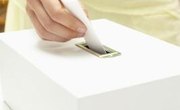A control sample is an important part of the scientific method in experimental procedures. Using a control group allows the person conducting the experiment to isolate the effect of the experimental treatment. If there are no control groups or the control group is imperfect, the results of the experiment are less clear and can even be misleading. It is important to use as powerful control samples that are as similar as possible in an attempt to eliminate the effect of outside variables.
Scientific Method in Experiments
Scientist who conduct experiments according to the scientific method must use a particular sequence of steps. They must first decide on a research question to investigate. For example, they might look at whether a particular new medication helps with cold symptoms. Next, they develop a hypothesis, which is an educated guess as to the effect of the treatment. In the case of the medicine's efficacy against cold symptoms, scientists decide the new medication should work to alleviate cold symptoms. Then the researcher designs an experiment such as testing out the medication on people with colds. The researcher then carries out the experiment, records the conditions and results and decides whether the results agree or don't agree with the selected hypothesis.
Experimental Treatment Effects
Each experiment will involve some kind of treatment or intervention which is expected to have a particular effect. In the cold symptom example, using the new medication is the treatment. In that experiment, the scientists would choose a group of people with colds and ask them to take the medication. After the subjects ingested the medication, the scientists would then record whether the subjects got better or maintained the same cold symptoms. This section of the experiment is called testing the hypothesis. The scientists doing the experiment want to know whether their initial hypothesis was a correct assessment of the true effect of the experiment. Within the experiment, scientists would have control groups to have accurate comparison points in control science definition.
Environmental Factors Examined
Many other factors can be in play aside from the experimental treatment. For example in the cold medicine example, some control sample subjects might have gotten better from colds naturally over time whether or not they had taken any medication. They also might have gotten better at different rates if they lived in different environments or consumed different foods. Prior health also might have affected their recovery; someone who is in poor health already may take longer to recover from a cold than a healthy person.
Using a Control Sample Group
Scientists conducting research choose a group of subjects that similar to the other experiment participants with the sole difference being that group does not get the treatment. In the cold symptom example, the scientists would choose two groups with the same age, health status, environment and try to match them up as closely as possible. The scientists would give both groups a medication similar in appearance. The only difference would be that one medication would be the new medication being tested and the other medication would be a placebo. Using the quality assurance sample of control groups help scientists isolate the treatment's effect while avoiding other variables affecting the experiment's results. However, even using control groups does not rule out the possibility of hidden variable bias affecting the results.
Related Articles
References
Writer Bio
Andrew Gellert is a graduate student who has written science, business, finance and economics articles for four years. He was also the editor of his own section of his college's newspaper, "The Cowl," and has published in his undergraduate economics department's newsletter.











